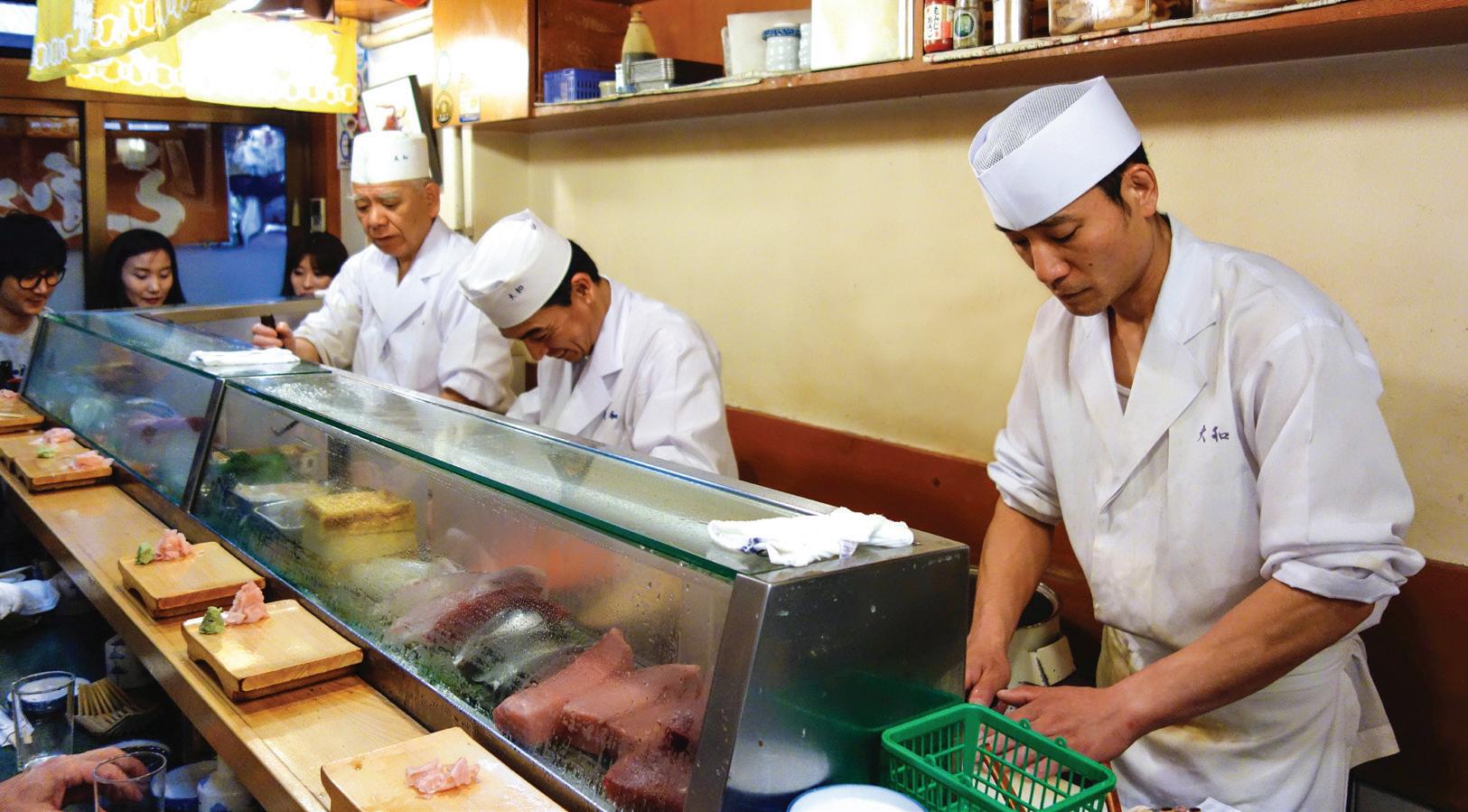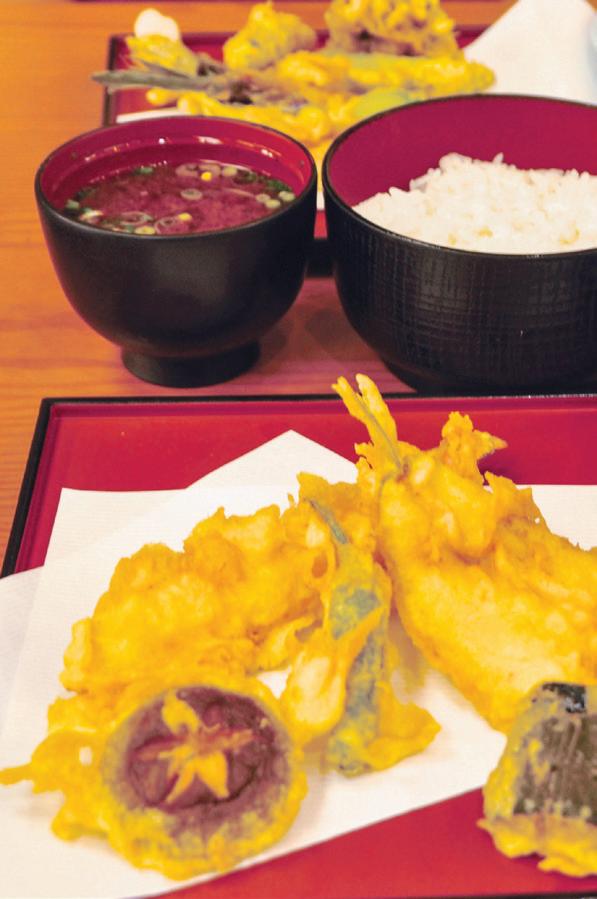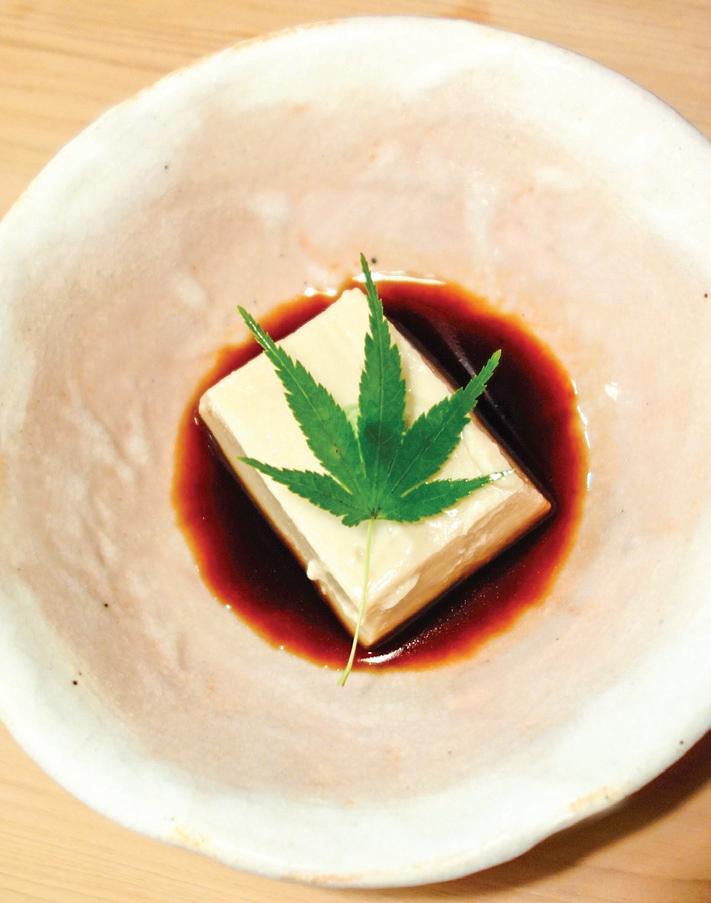
3 minute read
Authentic Curry in Japan


Advertisement
BY SMITA CHANDRA AND SANJEEV CHANDRA AUTHENTIC CURRY IN JAPAN
AS A COUPLE WHO LOVE TO COOK AND EAT, WHEN THE CHANDRA’S PLANNED THEIR VACATION TO JAPAN, THEY WERE LOOKING FORWARD TO ENJOYING AUTHENTIC JAPANESE CUISINE DURING THEIR TRAVELS. THEY DIDN’T ANTICIPATE THAT THE MOST MEMORABLE DISH WOULD BE SOMETHING QUITE FAMILIAR – CURRY!
We first discovered Japanese curry in Tokyo’s chic Shinjuku district at the famous Nakamuraya restaurant, where chicken and seafood curries are prominently displayed on the menu. For Indian visitors like us, this was irresistible – we had to try them! The curry came in a sauceboat, accompanied by a plate of white rice, grated Parmesan cheese and little dishes of fukujinzuke, pickled vegetables. The flavors of the curry were distinctly Indian, which only deepened the mystery. There was nothing in the décor or name of the restaurant that hinted at an Indian connection, so why was a Japanese restaurant in Tokyo serving Indian food? Curry has become such an integral part of their cuisine that most Japanese are surprised to learn it did not originate in their homeland. Curry arrived in Japan in the late 19th century, when for the first time, many Japanese began to travel to the west and were captivated by the culture and food they encountered. Most Japanese first tasted curry when traveling on British ships and associated this exotic dish with European rather than Indian cuisine.

The recipe for English curry followed a well-tested formula: meat and onions were fried in butter, curry powder and stock added, an apple thrown in for tartness, and the mixture slowly simmered. Japanese curry was similar, with soy sauce, honey and the all-important browned roux (made by combining flour, curry powder and butter) added in, making it uniquely Japanese. Cafés began to open in Tokyo serving coffee accompanied by pastries, pasta, and – strangest of all – curry. The Japanese love affair with curry intensified in modern times with the invention of ready-to-eat curry roux. A curry can be prepared in minutes by simmering meat or vegetables with this instant mix, making it the perfect comfort food to be enjoyed at home. Curry is now among the most popular instant food in Japan, with grocery stores selling frozen, microwavable or vacuum-sealed versions. Children adore milder curries containing apples and honey, and these have become a favorite item on school lunch menus. Curry is eaten with rice (kare raisu), over noodles (kare udon) or stuffed in bread (kare pan). National curry chains have carried the dish to every corner of Japan. Scallops, oysters and venison are all served in curries and considered regional delicacies. Traveling across Japan we enjoyed many memorable dishes: sushi at Tokyo’s Tsukiji fish market; tempura in the Asakusa district; yakitori skewers at a centuries-old inn in Kyoto; a vegetarian feast consisting only of tofu prepared in a dozen different ways at a Buddhist temple. But after savoring these we always came back to curry, for it was not only a beloved flavor for us, but also a little window into Japanese history. Nakamuraya’s restaurant has a particularly fascinating history, for it first opened as a café and added curry to its menu when the owner’s daughter married an Indian revolutionary who had evaded British police and found refuge in Japan in 1915. Nakamuraya’s curry was an instant success and the elite of Tokyo flocked to the café to taste authentic Indian food. Newspaper reporters soon picked up the story and made the curry famous as the “taste of love and revolution.” Who can resist sampling that?










